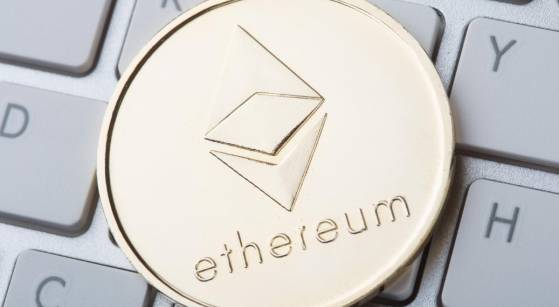Summary: Following the Ethereum merge six weeks ago, we take a look at whether it has honored its promises. As expected, the merge has drastically decreased the issuance of Ether, however, it has also initiated fear over censorship of certain transactions on the Ethereum network.
On the 15 September, the Ethereum merge occurred. At the merge, Ethereum’s consensus mechanism transitioned from computationally hungry proof-of-work to energy-friendly proof-of-stake. The merge was the most anticipated update of the Ethereum network since its inception, if not for all cryptocurrencies. Now, around six weeks later, the merge has impacted Ethereum positively but also in negative ways.
Ethereum functions as before the merge
The Ethereum merge occurred instantly and flawlessly without any interruptions to the network such as a network halt. This is positive for Ethereum’s ecosystem and for the world’s perception of the network. Likewise, for users and developers, the experience when interacting with the network is the same as before the merge.
From 500,000 to 1,000 Ether
As proof-of-stake demands much less computational power along with electricity, it can sustain a higher degree of security by compensating validators in proof-of-stake much less than miners in proof-of-work to verify transactions, also known as security cost. By lowering the security cost, the dilution of existing Ether holders is likewise reduced. Prior to the merge, the Ethereum network issued around 5.4mn new Ether yearly, whereas it currently issues between 600,000 and 700,000. As Ethereum burns the majority of paid transaction fees, its supply has nearly been fixed since the merge just as the amount of burned fees nearly offset newly issued Ether.
Following the merge, the Ether supply has alone increased by around 1,000 Ether, whereas it would have increased by slightly more than 500,000 Ether without its transition to proof-of-stake. This is of much importance to Ether investors since they are now barely diluted. On the contrary, with proof-of-stake, they may choose to receive the newly issued Ether and the non-burned part of the transaction fees by being a staker. With only around 14.5mn staked Ether of the 120mn supply, being a staker entails a reward of up to 7% yearly. As such, Ether is now a non-diluting asset with a potential high yearly reward. This is in sharp contrast to before the merge, at which point Ethereum had inflation north of 3.5% with no compensation to investors because the inflation was paid to miners. This makes Ethereum more appealing to investors, particularly to non-crypto advocates, for whom Ethereum may serve as an example of how crypto can generate something similar to dividends.
Still, validators are not yet able to withdraw from staking Ether. This prompts uncertainty and risk because investors have no clarity about when they will be able to withdraw from staking. While the risk is extremely minimal, the consequence must be mentioned. Ultimately, this implies that 14.5mn Ether can never be unstaked, possibly abolishing any faith in Ethereum. Taking into account that it may take a year until you can unstake Ether, this is a severe obstacle for Ethereum in the short term.
Are we about to censor on the protocol level?
The merge has made it conceivable that censoring of transactions on Ethereum’s protocol level could happen which is a concern. Following the merge, an increasing number of validators have outsourced the production of blocks to so-called MEV-boost (maximal extractable value) relays to increase staking rewards from non-burned transaction fees. By outsourcing block production to relays, validators may include transactions in its block that are not part of Ethereum’s public mempool, with the latter being the place, where transactions normally go prior to being verified and included in a block. Transactions that are not broadcasted to the mempool often include a much higher transaction fee, since the person in question is, for instance, executing arbitrage on decentralized finance protocols. By not broadcasting the transaction to a public mempool, it is assured that no one can front-run the original transaction before it is verified.
However, the dispute with MEV-boost relays is that they are largely not yet properly decentralized. This means that the majority are subject to sanctions, so they are e.g., not allowed to include transactions from US-sanctioned mixer Tornado Cash due to Office of Foreign Assets Control (OFAC) sanctions. As we speak, 64% of blocks censor transactions by outsourcing block production to OFAC-compliant relays. At the time of the merge, purely 9% of all blocks were subject to OFAC sanctions. In the case that 99% of blocks will be OFAC-compliant in the future, it will not be impossible to execute non-OFAC-compliant transactions, however, it will take up to 20 minutes to verify such a transaction and likely be more expensive, ultimately leading to a worse user experience for those transactions.
Although the present amount of transactions affected is very limited, the potential implication in the future is substantial. In the case that censorship gets more widely exercised on the protocol level and the intensity of sanctions increases, Ethereum is likely doomed to fail long-term. This is not about being against regulation but ensuring that Ethereum’s protocol level continues to be neutral and decentralized, which are the key selling propositions of any blockchain. If Ethereum can no longer guarantee neutrality and full decentralization, users and developers are likely to choose another blockchain that can.
It must be stated that the Ethereum community is working on various solutions, for instance, by concealing the content of transactions, so validators cannot censor transactions to the same extent. After all, these solutions are likely years in the making, so this issue will not be solved in the near term.
Source: https://www.home.saxo/content/articles/cryptocurrencies/after-the-ethereum-merge-the-supply-is-stuck-28102022











![Warsaw Stock Exchange: Brand24 (B24) - 1Q23 financial results Turbulent Q2'23 Results for [Company Name]: Strong Exports Offset Domestic Challenges](/uploads/articles/2022-FXMAG-COM/GPWA/gpw-s-analytical-coverage-support-programme-wse-2-6311cd4191809-2022-09-02-11-30-41-63175bda84812-2022-09-06-16-40-26.png)









![Warsaw Stock Exchange: Brand24 (B24) - 1Q23 financial results Turbulent Q2'23 Results for [Company Name]: Strong Exports Offset Domestic Challenges](https://www.fxmag.com/media/cache/article_small_filter/uploads/articles/2022-FXMAG-COM/GPWA/gpw-s-analytical-coverage-support-programme-wse-2-6311cd4191809-2022-09-02-11-30-41-63175bda84812-2022-09-06-16-40-26.png)


